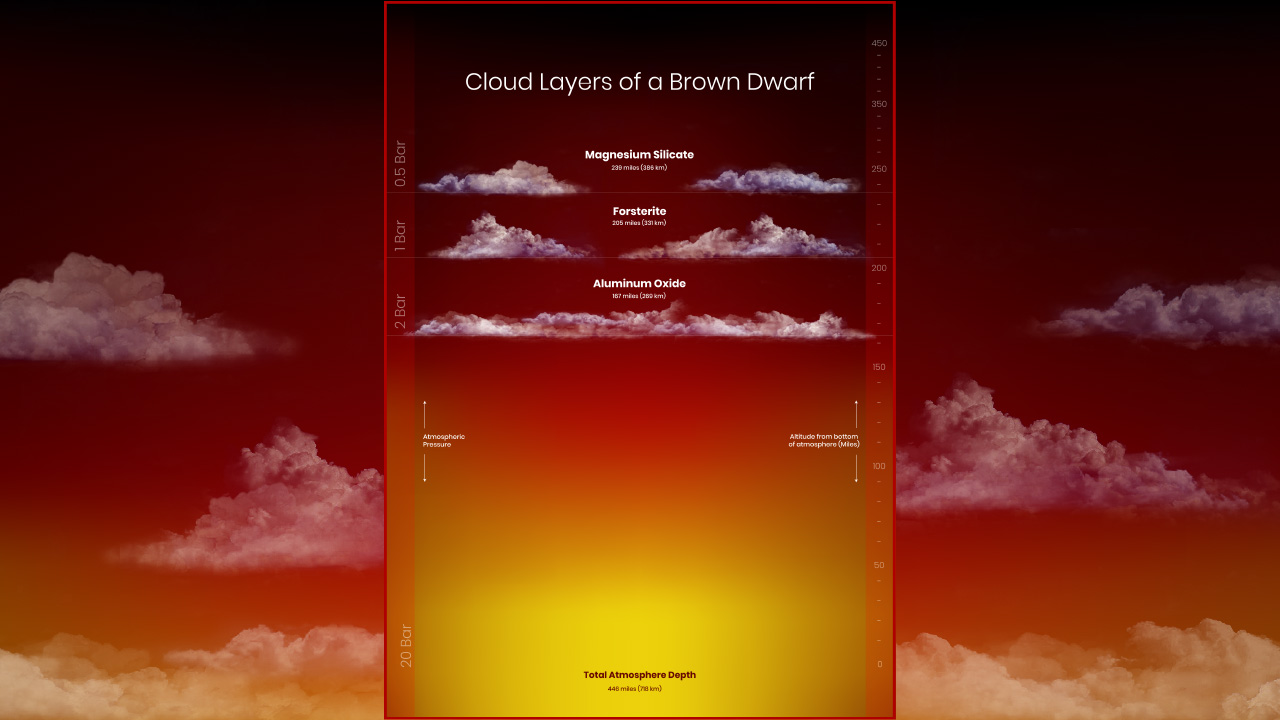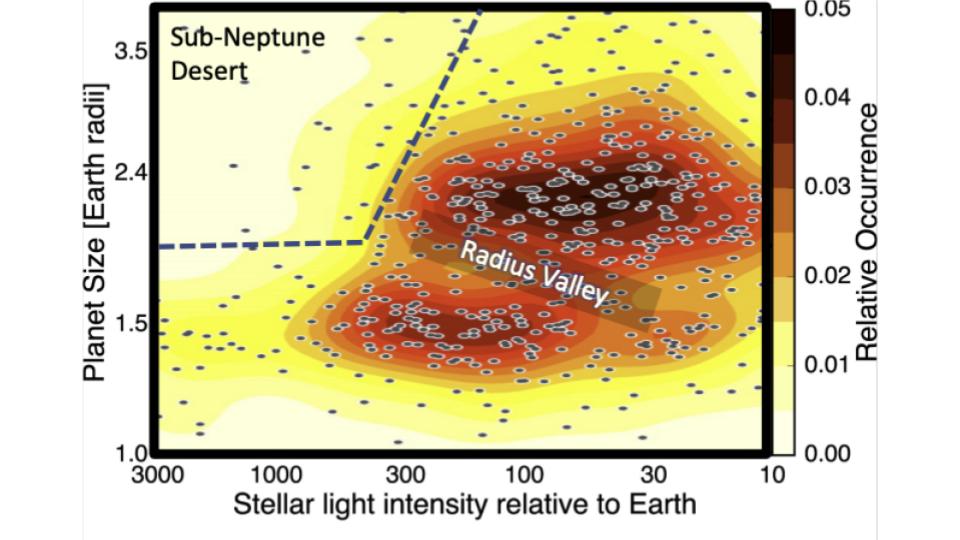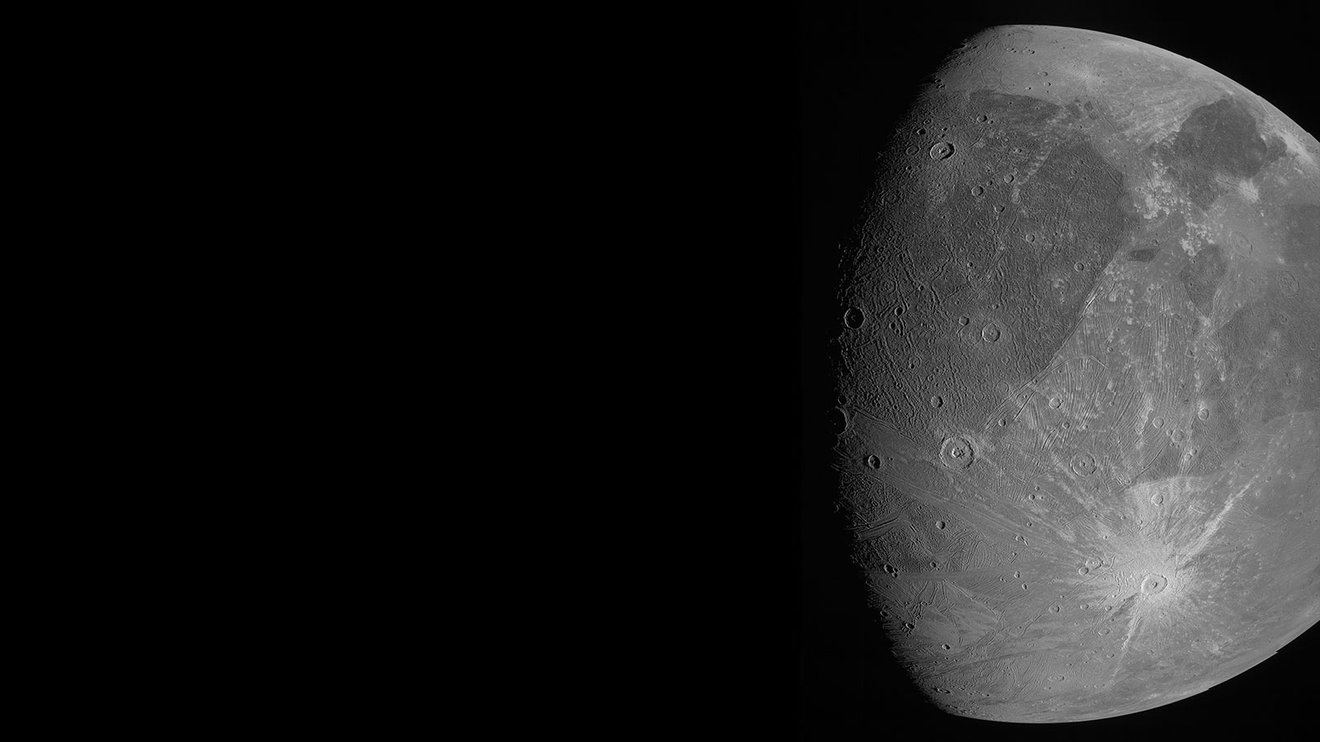In new research, scientists examined the populations of stars observed by the Kepler and K2 missions and found that the solar systems were different depending on the type of star involved. Plus, CHIME results, a brown dwarf’s atmosphere, a stream of stars in the Milky Way, and an interview with PSI’s Dr. Candice Hansen about the recent Ganymede flyby of NASA’s Juno spacecraft.
Media
Transcript
Hello and welcome to the Daily Space. I am your host Dr. Pamela Gay.
And I am your host Beth Johnson.
And we are here to put science in your brain.
As you may have caught on Tuesday, this week was the summer meeting of the American Astronomical Society. This is a smaller meeting but still rocks out a lot of science, with many teams holding their big releases for this event.

For instance, the CHIME telescope collaboration shared their catalog of nearly 400 newly discovered fast radio bursts (FRBs). These weird flashes in the sky were first discovered in 2007. Seeing them is hard. They only last a few milliseconds, and they are star-like in size, just a pinprick of radio light. Prior to the construction of CHIME, they were found only when folks got lucky and happened to have a radio telescope pointed in the correct direction at just the right moment.
CHIME is a new kind of radio telescope, and it uses half-cylinders, complex sensor arrays, and an even more complex software system to observe vast swaths of the sky simultaneously. From its location in British Columbia, it can observe the entire northern sky every day. Since it began operations in 2018, it has quadrupled the total known number of FRBs. With this kind of catalog, it begins to become possible to look for trends.
Currently, FRBs can be divided into two groups: those that repeat and those that don’t. The eighteen known repeaters all appear to last slightly longer and emit light in a broader range of frequencies than their shorter, more narrow counterparts. This catalog also yields some spatial information. As the light from distant FRBs travels through the universe, clouds of material disperse the radio signal and highlight locations of that material. Using CHIME’s data, they are able to trace out the large-scale structure of our universe, one momentary flash of light at a time.
The data presented at this meeting is just a start. The longer CHIME operates, the more discoveries will be made. The more researchers get to explore the data, the more breakthroughs in understanding will be made. We’re still in the early days and I can’t wait to see what is yet to come.
While some surveys simply look to see what’s there, others specifically target one kind of an object or another and then look for trends in those objects. Using the Atacama Large Millimeter/submillimeter Array (ALMA), a team of researchers led by Lucy Ziurys looked at five planetary nebulae to see where they kept their molecules.

Planetary nebulae are formed when stars like our Sun die. As they run out of fuel they can use for nuclear fusion, their core collapses into a white dwarf while their outer layers are exhaled. In visible light telescopes, we see hot gas with green coming from oxygen and red from hydrogen. We also see dark bands where either there is no material or where there is material that is too cold to shine in visible light.
With ALMA, we see colors redder and cooler than what our eyes can see. Instead of the light from hot atoms, ALMA caught the light from cool molecules and found that those molecules lurk in the dark places of planetary nebulae. This hints that the hot structures we’re used to seeing are shaped by cooler, denser clouds that ALMA can reveal. This work is just starting, with just a handful of nebulae so far observed, but this is an important piece of the puzzle for understanding how planetary nebulae end up with such wild shapes.
The vast distances in the universe mean a lot of things that we’re interested in are too far away to readily see. Understanding the details of small distant things is particularly hard, but scientists can often find creative solutions. When we aren’t surveying vast areas of the sky, we can also sit on individual objects or regions for long periods of time to see how things change. Small variations can hint at super cool science.
In more research presented at the AAS, Elena Manjavacas presents her team’s observations of tiny brown dwarfs using the Keck telescope. Instead of taking images, her team spread the light of the brown dwarfs out into a spectrum, or rainbow, and looked at the specific colors that correspond to light from different molecules. Brown dwarfs are objects big enough that they can burn heavy hydrogen in their cores but not big enough to burn regular hydrogen like a regular star. This means that they may ever so briefly act like stars before settling down to look (we think) more like gas giants. Manjavacas’ team wanted to see if light from brown dwarfs varied in systematic ways that would match with changing cloud patterns.

As a starting point, they looked at Beta Pictoris B, a brown dwarf just 115 light-years away, and twelve times larger than Jupiter. With a 3.5-hour rotation pattern, it is rotating faster than Jupiter and easy to observe during an Earth night. According to the release, the light reveals clouds of hot sand grains and other exotic elements. Potassium iodide traces the object’s upper atmosphere, which also includes magnesium silicate clouds. Moving down in the atmosphere is a layer of sodium iodide and magnesium silicate clouds. The final layer consists of aluminum oxide clouds. The atmosphere’s total depth is 446 miles (718 kilometers).
This paints a picture of a world we can’t actually see: a world with clouds, likely banding, and complex chemistry. As with so much of what we’re discussing today, these are just preliminary results, and we can’t wait to see what is learned as they survey more brown dwarfs for longer periods of time.
Cataloging what’s out there is really one of the most powerful ways to understand our surroundings. That whole idea that science is done by making a hypothesis and then testing it… that idea ignores the fact that you really should look to see what is there first and then make a hypothesis based on those initial observations that can be tested with future work. While CHIME is tuned to look for radio bursts, other surveys look in other colors and in other ways.
The orbiting Gaia space telescope is measuring the brightness, location, and movement of large chunks of our Milky Way galaxy, and this work makes it possible to see how some stars are simply passing in their very different orbits while others seem to originate from the same family of stars.

Continuing the Sloan Digital Sky Survey’s tradition of announcing new stellar streams at AAS, researchers using Gaia announced that an object loved by many amateur astronomers, the Southern Beehive cluster or NGC 2516, is much bigger than what we see in our binoculars. The full system is at least 1600 light-years tip to tip, and at its distance, is able to sweep across 40 full moon-widths of the sky. Research co-author Gaspar Bakos explains: I have seen the Southern Beehive many times through a pair of binoculars under the dark skies of Chile. The cluster nicely fits the view of the binoculars, because its apparent size in the sky is something like the tip of my thumb at arm’s length. It is curious to know … that the cluster actually spans an area as big as my entire palm held toward the sky.
The lead author of this study, Luke Bouma, points out that: The broader implication is that there are bound to be other enormous open clusters like this. The visible part of the cluster, where we can easily see the stars close together, may be only a small part of a much, much larger stream.
Stars that all belong to the same cluster also have the same age and the same chemical composition. The more stars we know belong to one system, the more opportunities we have to see how solar systems can form when the chemistry is held constant.
One of the coolest things to see at the AAS was the abundance of young researchers leading the charge in understanding exoplanets. First confirmed in 1995, exoplanets weren’t something a lot of us older folks were ready to focus our career on when we got started. Now, there is so much data and so many opportunities, that researchers are diving in and essentially homesteading on their own awesome research topics as the field comes into its own.

Part of what transformed exoplanet research from a low-data, high-risk research field into the rich topic that it is today is the success of the Kepler space telescope. This mission was originally launched to focus on one small field of stars and observe them over and over for years as researchers waited for planets to transit in front of those stars and reveal themselves. Over several years, Kepler found star after star after star, and then its navigation system went boink, and the research it had been doing was no longer possible.
As we keep saying, however, researchers will get creative when they want data. While they couldn’t use Kepler as planned, they could use it to look at a series of fields spread around the sky that were positioned in places the telescope could still point. This redo was called K2 and yielded its own rich harvest of planetary discoveries.
The first planets discovered and studied in this data were the ones that were obvious, but as the years have passed, the software has improved, and it has become easier to find the less obvious planets trying to sneak past their stars in the data. In fact, the sample was increased by roughly a third with a much larger sample set for both the original Kepler data and the extended K2 mission. Now with this software-enabled, new trove of planets, it became possible to look at things in a statistically rigorous way, and it turns out when you look closely, the stars in the two populations aren’t identical.
The original mission looked at stars that largely live in a region of the galaxy where most of the stars would be similar in composition to our Sun. In the follow-up, they looked where the spacecraft could look and tended to examine stars that had fewer heavy atoms and less of the stuff we think of when we think about building planets like Earth. Interestingly, although maybe not surprisingly, researchers found that the planets that formed (or sometimes didn’t form) in systems with fewer heavy atoms also had fewer planets.

Now, beyond this research, they were also able to look at what kinds of planets form in what kinds of systems. This was done with the initial Kepler data, and they discovered that there is this place in solar systems that is extremely hot where larger planets just can’t exist. This is the sub-Neptune desert. They also find that there is this strange gap in radius in planets where you just don’t see things of a certain size no matter where you look. The question became: Is this a function of the composition of the stuff available to form planets or is this universal?
Looking at the K2 data, they found that there was a slightly different distribution, but that sub-Neptune desert was still there. That gap in radius? Still there. This means that there is something going on during both the process of forming planets and perhaps during the later evolution of planets that either prevents the formation of worlds in these sizes and places or destroys them. As we talked about earlier this year, people are now starting to ask: if you start with a Neptune-like planet and you put it too close to its star, does that atmosphere get blasted away, leaving behind a giant, earthy rock? Time will tell. But now we have a whole lot more planets to yield up their story.

A few days ago, we brought you the news that NASA’s Juno spacecraft was scheduled to perform a flyby of Jupiter’s moon Ganymede. This flyby would capture the first close-up images of the large moon in twenty years, and we are pleased to say that the flyby happened, and two images have already been released. The two images show amazing detail as they were taken from a distance of about 1000 kilometers. We’ll have both images on our website, DailySpace.org, for you to peruse at your leisure. Enjoy the craters, the possible tectonic faults, and the patches of bright and dark material. One of the images was taken by the JunoCam imager and the second was with the Stellar Reference Unit star camera. (That second camera is the same one that helped scientists figure out that Earth’s zodiacal light phenomenon was caused by meteorite dust from Mars.)
Today, we are pleased to have with us Dr. Candice Hansen, a senior scientist at the Planetary Science Institute and a co-investigator for the Juno mission. Dr. Hansen is also responsible for JunoCam operations, and she is here today to talk about this flyby, upcoming flybys, and the citizen science aspect of JunoCam.
Thank you for joining us today, Dr. Hansen, and welcome.
[Interview]
For now, though, this has been the Daily Space.
Learn More
CHIME Telescope Catalogs Radio Flashes
- McGill University press release
- MIT press release
- The University of British Columbia press release
Planetary Nebulae Hide Molecules in Their Cold, Dark Bands
- The University of Arizona press release
Brown Dwarfs Reveal Their Stripes?
- Hubble press release
Star Clusters Are More Than Our Binoculars Can See
- Princeton press release
Solar Systems Vary From Star Type to Star Type
- Penn press release
- “Statistics of the Chemical Composition of Solar Analog Stars and Links to Planet Formation,” Jacob Nibauer et al., 2021 February 5, The Astrophysical Journal
NASA Juno Successfully Performs Ganymede Flyby
- NASA JPL press release
Credits
Written by Pamela Gay and Beth Johnson
Hosted by Pamela Gay and Beth Johnson
Audio and Video Editing by Ally Pelphrey
Content Editing by Beth Johnson
Intro and Outro music by Kevin MacLeod, https://incompetech.com/music/


 We record most shows live, on Twitch. Follow us today to get alerts when we go live.
We record most shows live, on Twitch. Follow us today to get alerts when we go live.